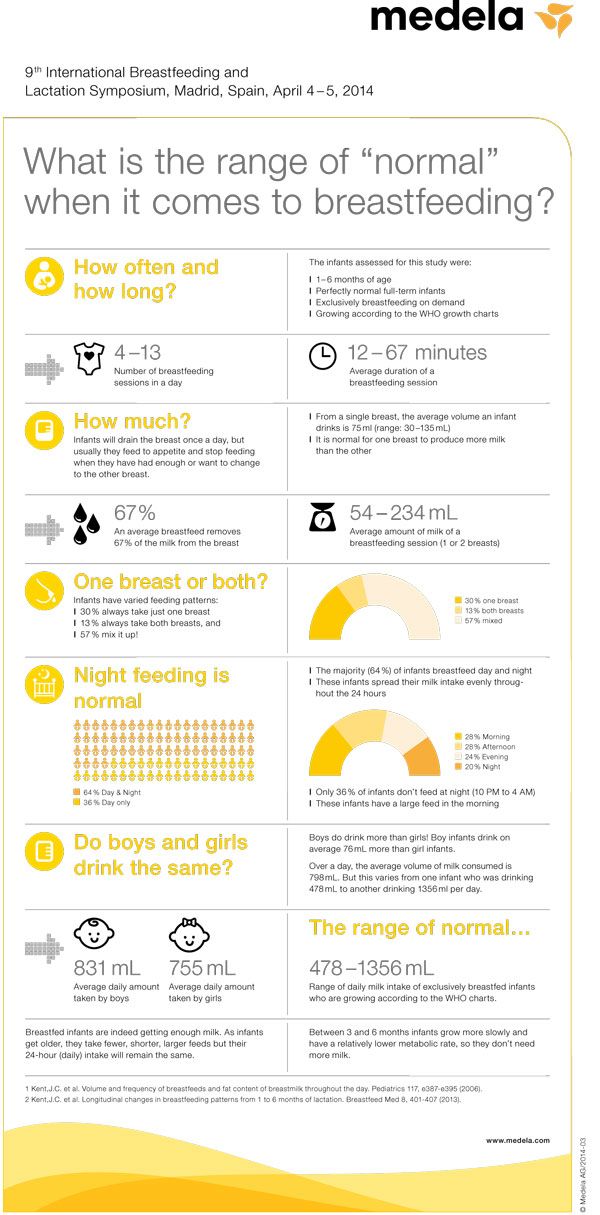When can babies go 4 hours between feedings
Tips for the First Year
Eat, sleep, pee, poop, repeat. Those are the highlights in a day of the life of a brand new baby.
And if you’re a new parent, it’s the eating part that may be the source of many of your questions and worries. How many ounces should your baby take? Do you wake a sleeping baby to eat? Why do they seem hungry all the time? When can your child start solids?
Questions abound — and, despite Grandma’s insistence, the answers have changed since you were a tot. It’s now recommended that newborns, even formula-fed ones, eat on demand (consider it good preparation for the teenage years) and that babies wait to start solid foods until they’re 4 to 6 months old.
On day one of life, your baby’s stomach is the size of a marble and can only hold 1 to 1.4 teaspoons of liquid at a time. As your baby gets older, their stomach stretches and grows.
It’s hard (or impossible, really) to know how much milk your baby is taking in while breastfeeding. But if you’re bottle feeding due to any number of valid reasons, it’s a bit easier to measure.
Here, from the American Academy of Pediatrics (AAP), a typical feeding schedule for bottle-fed babies.
| Age | Ounces per feeding | Solid foods |
|---|---|---|
| Up to 2 weeks of life | .5 oz. in the first days, then 1–3 oz. | No |
| 2 weeks to 2 months | 2–4 oz. | No |
| 2–4 months | 4-6 oz. | No |
| 4–6 months | 4–8 oz. | Possibly, if your baby can hold their head up and is at least 13 pounds. But you don’t need to introduce solid foods yet. |
| 6–12 months | 8 oz. | Yes. Start with soft foods, like one-grain cereals and pureed vegetables, meats, and fruits, progressing to mashed and well-chopped finger foods. Give your baby one new food at a time. Continue supplementing with breast or formula feedings. |
Every baby is unique — but one thing that’s pretty consistent is that breastfed babies eat more frequently than bottle-fed ones. That’s because breast milk is easily digested and empties from the stomach a lot quicker than formula.
Breastfed babies
There’s no rest for the weary. According to La Leche League International, you should begin nursing your baby within 1 hour of birth and provide about 8 to 12 feedings daily in the first few weeks of life (yeah, we’re exhausted for you).
At first, it’s important not to let your baby go more than 4 hours without feeding. You’ll likely need to wake them up if necessary, at least until breastfeeding is well established and they’re gaining weight appropriately.
As your baby grows and your milk supply amps up, your baby will be able to take in more milk in less time at one feeding. That’s when you might start to notice a more predictable pattern.
- 1 to 3 months: Your baby will feed 7 to 9 times per 24 hours.
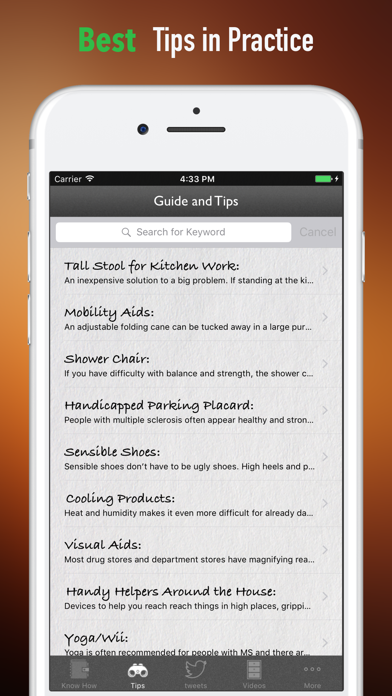
- 3 months: Feedings take place 6 to 8 times in 24 hours.
- 6 months: Your baby will feed around 6 times a day.
- 12 months: Nursing may drop to about 4 times a day. The introduction of solids at about 6 months helps to fuel your baby’s additional nutritional needs.
Keep in mind that this pattern is just one example. Different babies have different paces and preferences, along with other factors that influence the frequency of feedings.
Bottle-fed babies
Like breastfed babies, bottle-fed newborns should eat on demand. On average, that’s about every 2 to 3 hours. A typical feeding schedule may look like this:
- Newborn: every 2 to 3 hours
- At 2 months: every 3 to 4 hours
- At 4 to 6 months: every 4 to 5 hours
- At 6+ months: every 4 to 5 hours
For both breastfed and bottle-fed babies
- Don’t give liquids other than formula or breast milk to babies under a year old. That includes juices and cow’s milk.
 They don’t provide the right (if any) nutrients and can be upsetting to your baby’s tummy. Water can be introduced around 6 months when you start offering a cup.
They don’t provide the right (if any) nutrients and can be upsetting to your baby’s tummy. Water can be introduced around 6 months when you start offering a cup. - Don’t add baby cereal to a bottle.
- It can create a choking hazard.
- A baby’s digestive system isn’t mature enough to handle cereal until about 4 to 6 months of age.
- You could overfeed your baby.
- Don’t give your baby any form of honey until after their first birthday. Honey can be dangerous for a baby, occasionally causing what’s called infant botulism.
- Do adjust your expectations based on your baby and their unique needs. Premature babies are likely to follow feeding patterns according to their adjusted age. If your baby has challenges like reflux or failure to thrive, you may need to work with your doctor on the appropriate feeding schedule and amount they should be eating.
Schedules are the holy grail of every parent. Your child will naturally start to fall into a feeding pattern as their tummy grows and they can take in more breast milk or formula at one sitting. This may begin to happen between 2 and 4 months of age.
This may begin to happen between 2 and 4 months of age.
For now, though, focus on learning your baby’s hunger cues, such as:
- rooting around your chest, looking for a nipple.
- putting their fist in their mouth
- smacking or licking their lips
- fussing that can escalate quickly (don’t wait until your baby’s hangry to feed them)
Once your baby is a few months old, you may be able to introduce a sleep/feed schedule that works for you.
Let’s say, for example, your 4-month-old wakes every 5 hours for a feeding. That means if you feed at 9 p.m., your baby wakes around 2 a.m. But if you wake and feed the baby at 11 p.m., just before you go to bed, they may not rouse until 4 a.m., giving you a decent chunk of nighttime winks.
In general, if your baby seems hungry, feed them. Your baby will naturally eat more frequently during growth spurts, which typically occur around 3 weeks, 3 months, and 6 months of age.
Some babies will also “cluster feed,” meaning they’ll feed more frequently during certain periods and less at others. For example, your baby may cluster feed during the late afternoon and evening and then sleep longer at night (yay!). This is more common in breastfed babies than bottle fed babies.
For example, your baby may cluster feed during the late afternoon and evening and then sleep longer at night (yay!). This is more common in breastfed babies than bottle fed babies.
Worried about overfeeding? While this isn’t really possible to do with an exclusively breastfed baby, you can overfeed a baby who’s taking a bottle — especially if they’re sucking on the bottle for comfort. Follow their hunger cues, but talk to your pediatrician if you’re worried your little one may be overeating.
Your baby is probably ready for solids if they’re 4 to 6 months old and:
- have good head control
- seem interested in what you’re eating
- reach for food
- weigh 13 or more pounds
Which food to start with? The AAP now says it doesn’t really matter much in what order you introduce foods. The only real rule: Stick with one food for 3 to 5 days before offering another. If there’s an allergic reaction (rash, diarrhea, vomiting are common first signs), you’ll know which food is causing it.
As your baby grows, move from pureed baby food to ones that have more texture (for example, mashed banana, scrambled egg, or well-cooked, chopped pasta). This generally happens around 8 to 10 months of age.
Your supermarket offers a variety of baby food products, but if you want to make your own, keep it sugar and salt free. Additionally, at this stage, don’t feed your baby anything that could be a choking hazard, including:
- hard foods, such as popcorn or nuts
- hard, fresh fruits, like apples; cook to soften or chop into very small pieces
- any meat that isn’t well cooked and very well chopped (this includes hot dogs)
- cheese cubes
- peanut butter (though talk to your pediatrician about this one — and the benefits of introducing diluted peanut butter before the age of 1)
As your baby nears their first birthday, they should be eating a variety of foods and taking in about 4 ounces of solids at each meal. Continue to offer breast milk or formula. By 8 months, babies are drinking about 30 ounces a day.
By 8 months, babies are drinking about 30 ounces a day.
Oh yeah, and buy some stock in a company that makes stain-fighting laundry detergent. It’ll pay for college.
Babies aren’t cookie cutter. Some will gain weight easily, while others will have problems. Things that can affect a baby’s weight gain include:
- having a birth defect like a cleft lip or palate, which creates problems feeding
- having a milk protein intolerance
- being premature
- being fed with a bottle versus the breast
A 2012 study of more than 1,800 babies found that the infants who were fed with a bottle — regardless of whether the bottle contained breast milk or formula — gained more weight in the first year than babies who nursed exclusively.
Your baby’s doctor is the best one to advise you on a healthy weight range for your baby.
How, when, and what to feed a baby are top worries of every parent — but there’s good news: Most babies are pretty good judges of when they’re hungry and when they’re full — and they’ll let you know it.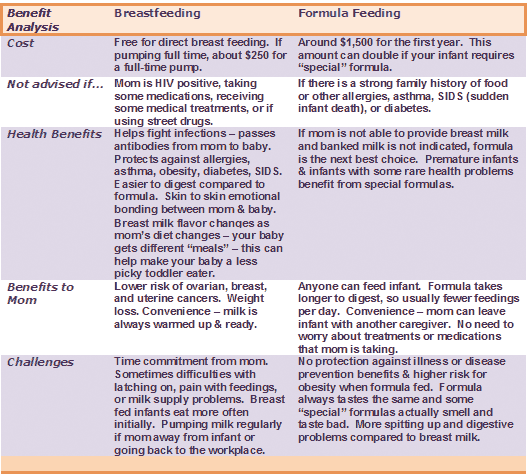
You just need to present them with the right choices at the right time and pay attention to their cues. If you have any questions or concerns, your pediatrician is there to help you along the way.
When and How to Move Baby to 4 Hour Schedule
When to Move baby to a 4 Hour Schedule. Once your baby is happily eating every three hours and you seem to always need to wake her up to eat, it may be time to move from a three hour schedule to the four hour schedule. Read on to see if your baby is ready.
Aaahhh. The four hour schedule. Any mom who has been there knows how wonderful it is. Any mom who hasn’t can only dream, but she is sure it is lovely. There are many wonderful things about a 4 hour schedule, especially if you are breastfeeding.
As lovely as it seems (and it is lovely), don’t rush into it. Wait until your baby is ready for it. The Babywise book says that “many a mother” is anxious to move to a 4 hour schedule (for good reason!), but there is no need to rush it.
When your baby is young, you will typically feed your baby every 2.5-3 hours throughout the day. As your baby gets older, he will be able to extend that time interval and eventually land at the 4 hour schedule. This post outlines when and how to implement a Four Hour Schedule for your baby. So how do you know if your baby is ready?
Post Contents
- Signs Baby is Ready for a 4 Hour Schedule
- Baby is Sleeping Through the Night
- Baby Can Take Fewer Feedings
- Baby is Always Sleeping When It is Time to Eat at 3 Hours
- Become a Schedule PRO
- Thank you!
- Baby Is Not Hungry at Feeding Times
- Baby Can Handle Longer Waketime Lengths
- Baby is at Least 12 Weeks Old
- Trust Your Gut
- What To Do When Baby is Almost Ready for a 4 Hour Schedule
- Consider Dropping the Dreamfeed
- My eBooks
- How To Move to a Four Hour Schedule
- Conclusion
- Poll Results of Poll Conducted on this blog
- Related Schedule Posts On This Blog
- FAQs 4 Hour Schedule Questions:
Signs Baby is Ready for a 4 Hour Schedule
How do you know when to move to a 4 hour schedule? Your baby might be ready for a four hour schedule when the following are true:
Baby is Sleeping Through the NightBaby should be STTN (sleeping through the night) with no feedings. By STTN I mean 12 hours with no feedings. The Babywise book, however, says 9-10 hours before moving to a 3.5 hour schedule.
By STTN I mean 12 hours with no feedings. The Babywise book, however, says 9-10 hours before moving to a 3.5 hour schedule.
Watch your child and do what you think is best. You may or may not have a dreamfeed when your baby moves to a four hour schedule. Your baby should be going 8-12 hours at night without a feeding before you consider a four hour feeding schedule.
Baby Can Take Fewer FeedingsYour baby will likely be taking 5-6 feedings a day between 7 AM and 7 PM (or 7:30-7:30, depending on your waketime) before you are ready for the 4 hour schedule. 4 hours means 4 feedings.
You want to be sure your baby is physically ready. That is why I say don’t push. Some women need to do 5 feedings if they are BF (breastfeeding). Watch your supply if you are breastfeeding.
To know if your child is old enough to drop to four feedings in a day, see Your Babywise Baby First Year Overview. Once you are on a four hour schedule, your baby will eat four times during the day. You might have a fifth if you still have a dreamfeed.
You might have a fifth if you still have a dreamfeed.
If your baby is still asleep at every feeding on your current 3-3.5 hour feeding, there is a good chance it is time for a four hour schedule.
This is the biggest sign. Items 2 and 3 are taken care of, and now you watch for item 4. By always I mean most of the time.
Some babies (like my Brayden) will be able to have longer wake times and therefore will sleep later. Others (like my Kaitlyn) will have the same waketime length, but just sleep longer for naps.
I just wouldn’t move to a four hour schedule if the child wasn’t sleeping well. If you are entertaining them before mealtime on a 3 hour schedule, imagine what it will be like if you extend it to four hours.
With that said, there are moms who feel like it is time to move to a four hour schedule and it actually fixes baby’s sleep issues and baby sleeps better.
Become a Schedule PRO
Get my FREE email series and learn how to become a schedule PRO. Get help on baby schedules and routines and all of my schedule tips!
Get help on baby schedules and routines and all of my schedule tips!
Baby isn’t that hungry for each meal eating every three hours. They don’t show interest in it. If baby isn’t hungry yet at 3-3.5 hours, he might be ready for a longer feeding schedule.
Baby Can Handle Longer Waketime LengthsBaby can have a longer waketime or longer naps. To have a four hour feeding schedule, your baby needs to be able to stay awake for 2 hours and then sleep for 2 hours, OR baby needs to be able to stay awake for 1.5 hours and then nap for 2.5 hours. Some babies might be up for 2.5 hours and then nap for 1.5 hours.
Baby is at Least 12 Weeks OldBaby needs to be old enough to go 4 hours between feedings both for the length between feedings and also because going 4 hours between feedings means dropping the number feedings in a day.
Trust Your GutYou will just know when your baby is ready. With my two older kids, they moved to 4 hours themselves, I didn’t move them. I had to let them, but that is a different post.
With my two older kids, they moved to 4 hours themselves, I didn’t move them. I had to let them, but that is a different post.
If you feel like it is time, trust yourself. Never discount your parental intuition. If you just really feel like it is time, give it a try and see how it goes. You can always go back to the 3-3.5 hour schedule if the 4 hour schedule was not right.
What To Do When Baby is
Almost Ready for a 4 Hour ScheduleLet’s say your baby can go longer in the morning but not all day, what do you do?
I say this is a sign that 4 hours is coming soon. Until then, let baby go 3.5 hours in the morning, then do 3 hours the rest of the day.
You can do a combination 3-3.5 or even 3-4 hour schedule. You can do some intervals at four hours, others at three hours, and others at 3.5 hours.
Consider Dropping the Dreamfeed
Sometimes you will have to decide between moving to a four hour schedule OR dropping a dreamfeed. Many babies can do one or the other at first, but not both at the same time. There is no one right order to go in. I did it one way with two babies and another way with the other two babies.
There is no one right order to go in. I did it one way with two babies and another way with the other two babies.
Read: When To Stop the Dreamfeed
If your baby is not ready, do not stress and push moving to the four-hour schedule. Your baby will get there when he is ready.
Also, remember a combo schedule is perfectly acceptable. You might find your baby can go four hours in between the first two feedings, but needs the remainder of the feedings to be every 3 hours. That is totally fine.
Ready to move? See these sample 4 hour schedules for baby
My eBooks
How To Move to a Four Hour Schedule
If you feel confident it is time to move to a four hour schedule, you might be wondering how to make it happen.
You will first need to either keep baby awake longer for playtime or let baby sleep longer for naps. This will ensure baby can get to a four hour feeding interval. If you try to keep baby awake longer and naps stop going well, go back to the 3-3.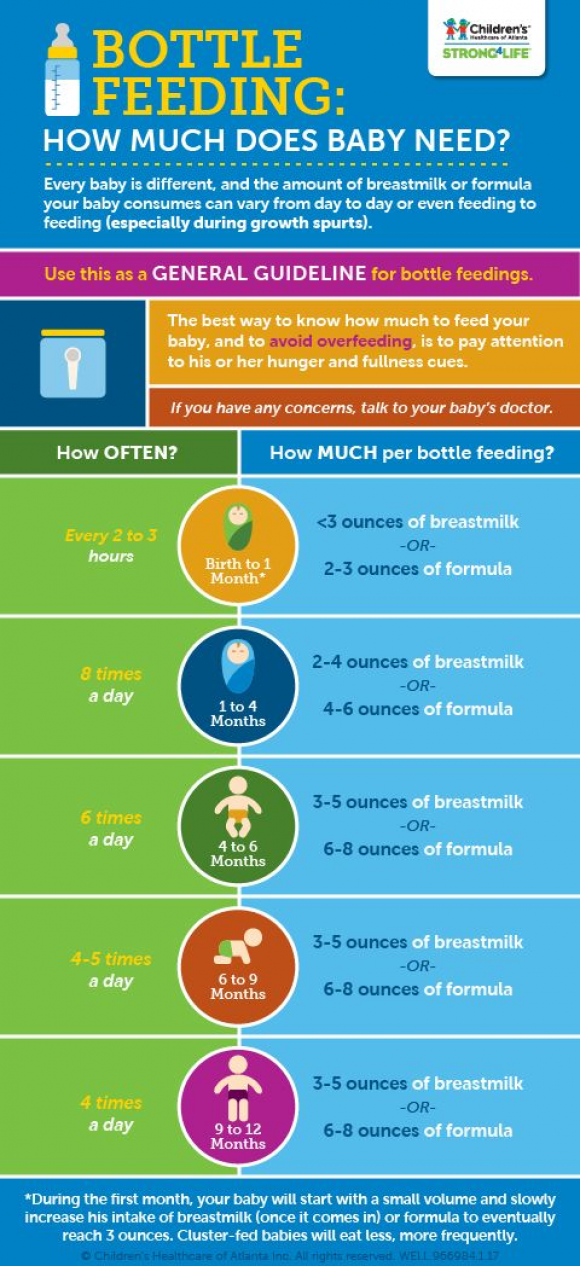 5 hour schedule and try the four hour schedule at a later date.
5 hour schedule and try the four hour schedule at a later date.
You can initially let baby sleep longer and slowly add five minutes of waketime to each waketime until you find out how long baby can be awake and still take a good nap (or until you get to a 2 hour waketime with a 2 hour nap time. If you get there, stop and be satisfied).
Again, if you feel like some intervals need to be 4 hours but others need to be 3 or 3.5, that is perfectly fine.
Once you have moved to the four hour schedule, if your baby starts to be discontent, act hungry, or start waking early from naps or in the night, go back to your old schedule and try for the four hour schedule a later time.
Conclusion
Moving to a four hour feeding schedule is a glorious milestone. Watch for the readiness signs and give it a try when baby is ready. Do not push the schedule before your baby is ready for it. This is a developmental milestone just as walking is. You cannot successfully force it before baby is ready to do it.
Don’t feel pressured to move to a 4 hour schedule. Don’t measure your success by it. Kaitlyn didn’t move to 4 hours until she was almost 7 months old, and Brayden was older. They may have gone sooner if I had pushed them, but I let them set the pace and we all were peaceful, happy and relaxed. Don’t thrown one more thing into the mix to stress you out and cause you frustration.
Read more at The Babywise 4 hour schedule: More thoughts.
This post was originally published December 19, 2007
Follow me on Facebook to see updates of the newest info on the blog as well as funny parenting memes–because we all need to laugh!
Poll Results of Poll Conducted on this blogWhat Age Did LO Move to 4 Hour Schedule (approximate)?
Results:
- 3 Months: 1 Vote
- 4 Months: 5 Votes
- 5 Months: 1 Vote
- 6 Months: 5 Votes
- 7 Months: 0 Votes
- 8 Months/Older: 3 Votes
Total of 16 Votes.
Related Schedule Posts On This Blog
- Four Hour Schedule: More Thoughts
- Combo Schedule is Okay
- Tricks for Getting Baby on a Consistent Schedule
- The Baby Whisperer Four Hour Schedule
- Amber said…
Hey, I love this post [It’s Dynamic] it describes parenting so well! It is always changing and of course that is what makes it so hard.Quick question: I would like to ~try~ to see if my daughter (3 1/2 months) is ready for a 3 1/2 hour schedule. The problem is that she is still having only 1 hour – 1hour 15min at the most of waketime. She would then be sleeping for 2 1/2 hours. Is that alright? Or should I not move the schedule until she can stay awake for 1 1/2 to 2 hours?Thanks~January 9, 2008 6:49 AM
Plowmanators said…
2.5 hour is fine. If she is sleeping and you have to wake her for feedings, then you know she can go longer. Keep in mind that you can do a combo schedule.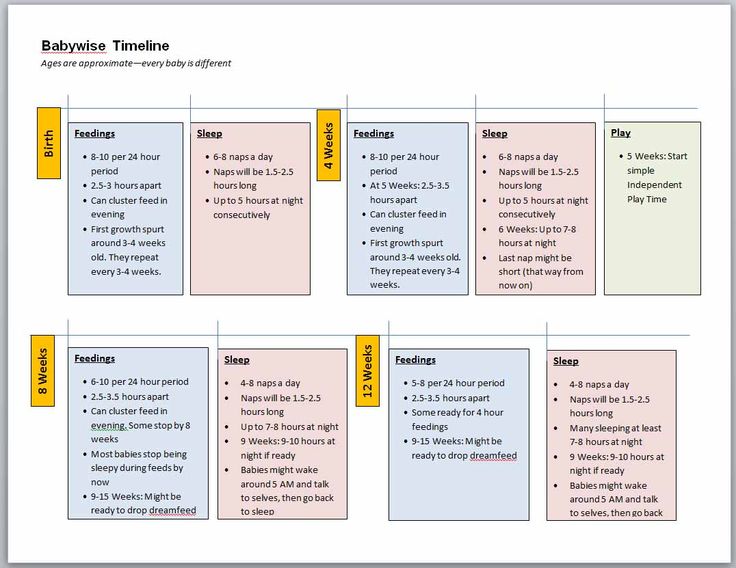 If she can go 3.5 hours in the morning but only 3 the rest of the day, that is fine! It is moving in the right direction.January 9, 2008 7:12 AM
If she can go 3.5 hours in the morning but only 3 the rest of the day, that is fine! It is moving in the right direction.January 9, 2008 7:12 AM - susie said…
I am new to this website. I love BWise & I just love this very helpful website. I wish I new about this months ago. I have a 6 month old daughter and we’ve been doing Bwise since birth. She has been sleeping thru the night since 6 weeks. She is a great sleeper at night, but not so much a good napper. She is on a 4 hour schedule. She “takes” 3 2 hour naps a day. She lays down for a nap really well, usually no crying. However, every nap since birth it seems like, she wakes up after 30 minutes and struggles falling back to sleep. Any suggestions?*Do you think I started the 4 hour routine too early?
February 18, 2008 12:02 PM
Plowmanators said…
I am glad you found us! I personally don’t move to the 4 hour schedule until baby can sleep through to the next nap. It throws everything way off otherwise. She might not move her schedule back. I would continue to see if you can figure out the napping thing. See the “Naps: Troubleshooting” post. Some babies just seem to click one day. Let me know if I can answer any questions! I would recommend looking at the blog index and then the Naps section. I would read the many posts on nap issues. Good luck!
She might not move her schedule back. I would continue to see if you can figure out the napping thing. See the “Naps: Troubleshooting” post. Some babies just seem to click one day. Let me know if I can answer any questions! I would recommend looking at the blog index and then the Naps section. I would read the many posts on nap issues. Good luck!
February 18, 2008 1:42 PM - Fortibus Marketing of Charleston, L.L.C said…
I typically have to wake up my son for all of his naps except for his first morning nap and his last nap he tends to wake up early most of the time and I have to go in a calm him to sleep, or he usually settles himself to sleep for the last nap. What does that mean for him? He doesn’t seem to be able to stay up longer then 1.5 hours, so does that mean that we should have him sleep for 2 hours and then still stay up for only 1.5 hours?
February 26, 2008 7:40 PM
Plowmanators said…
My daughter stays up for various lengths depending on the time of day, but one time is 1 hour 45 minutes. She then sleeps for two hours fifteen minutes. That is fine.You can try extending certain feedings. Not a feeding he wakes up for, but one he is always asleep for at feeding time. See how that one goes. Good luck!
She then sleeps for two hours fifteen minutes. That is fine.You can try extending certain feedings. Not a feeding he wakes up for, but one he is always asleep for at feeding time. See how that one goes. Good luck!
February 26, 2008 9:35 PM - susie said…
I have a 7 month old daughter. I work as a nurse so she is in daycare 2x/week. We have been doing BW since birth. My daughter has went straight to sleep and slept through the night since 6 weeks old. However, for thew last couple of days, she cries at bedtime and for every nap. I have been trying to move her to a 4 hour schedule for a few weeks now. I am just so frustrated b/c I feel it is so hard hearing her cry. My husband has been working really late nights and my family doesn’t support BW at all!!! So, I feel lonely. I do believe it works. I love the whole concept of BW. I see great results in BW children. However, her naps have NEVER been solid 1.5 – 2 hours. I have tried adjusting her wake times. I feel like I have tried it all!!! She is the one that you cannot interfere with at all during naps.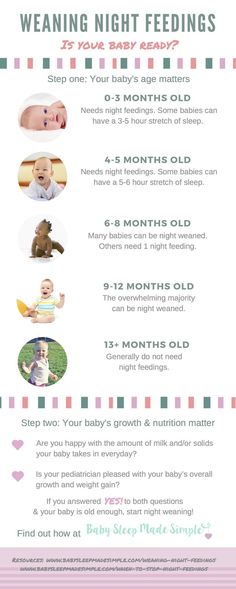 So not only am I letting her cry at naps, but also during waketimes b/c she hates alone time…HELP!!!March 13, 2008 3:00 PM
So not only am I letting her cry at naps, but also during waketimes b/c she hates alone time…HELP!!!March 13, 2008 3:00 PM
Plowmanators said…
Susie,So was she fine for naps and night before you started trying the 4 hour schedule? If so, I would move back to that and see how it goes. You will make life a lot easier on yourself if you aren’t trying force yet another thing. I personally wouldn’t move to a four hour schedule until I had to get the baby up from naps, like Babywise says. However, there are moms who have tried it before naps were long enough and found baby slept well once the 4 hour schedule has been established.I would stick with the 3 hour (or remember you can do a combo 3-3.5 or even 3-4 hour schedule) since crying seems to have gotten worse.Also, watch for those normal disruptions like teething and sickness. If she suddenly starts crying after not having done so for so long, my guess is there is a good reason for it. Good luck, and please ask if you have further questions.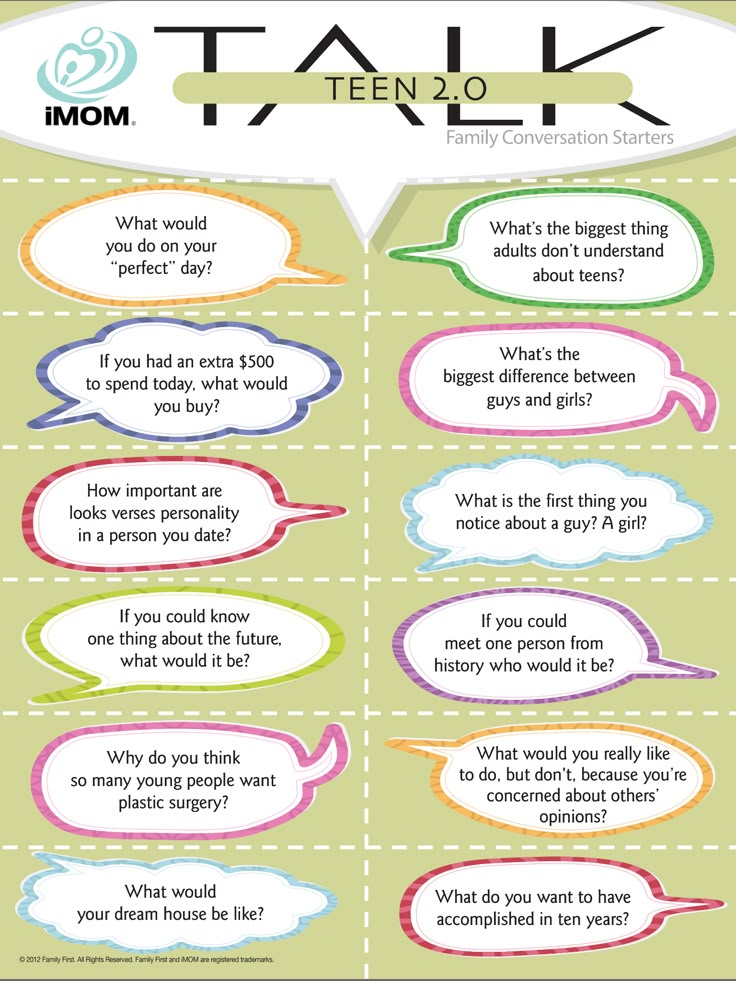
March 14, 2008 10:02 AM - Kelly said…
Hi. I don’t know if you remember me but I posted about my twins that were 5 weeks early (their ped does NOT adjust age…weird!). You suggested waiting until 12 weeks adjusted until doing anything. They turned 12 weeks on a Friday and Saturday one slept 6-6:30 and the other 6-4-6:30. YAY! However, now my one that woke at 4 is back to waking at 11 and 4 and taking 4 ounces at each feeding. Oh wait…they have moved to a 4-3-4 hour schedule. Here is their schedule now645 wake/eat815-11 nap11 eat1215 nap2 wake/eat3 nap415 wake545 bedtime routine6 last bottle…bed
Both of my girls have moved themselves to this schedule (before they were 7,10,1,4,7). I wish they didn’t to be able to get the one to STTN (more feeds) but I am not going to wake them from their nap just to get more food in them. Because I have two I don’t really want to mess with their daytime schedule (ie have one on one schedule and the other on another). I think right now the “waker” may be teething and not eating as much during the day causing her to wake at night…. is that possible? Thankfully the “waker” does not wake my other one. Do you have any suggestions?
is that possible? Thankfully the “waker” does not wake my other one. Do you have any suggestions?
June 10, 2008 9:23 PM
Kelly said…
Oh, forgot to add they are almost 15 weeks adjusted now, almost 5 months unadjusted.
June 10, 2008 9:24 PM
Plowmanators said…
Yes, it is common for a teether to not eat as much as usual. You are also about at 4 months with the adjusted age. See these posts:4 month Sleep Problems
5-8 Month Sleep Disruptions
June 11, 2008 11:02 AM - Abby’s Mom said…
I have a 6 month old who is still on a 3 hour schedule, sometimes only 2.5. She still eats 6 times per day because she continues to wake between 5am and 6am and will not back to sleep unless I feed her. I then wake her at 8am to start her day. She has never been a good napper and I think I have finally accepted that she never will be because I have tried everything. Her naps are usually about an hour, sometimes only 45 minutes. With this in mind, do you think she will ever move to a four hour schedule? Her optimal wake time is about 1.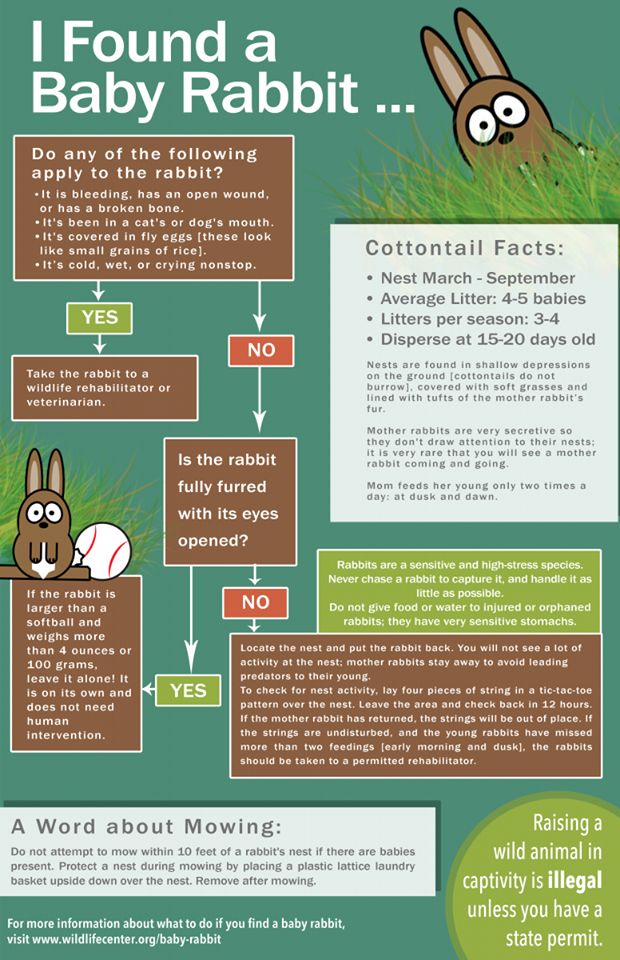 5 hours. If she doesn’t ever take longer naps, does that mean she will just always be on a 3 hour schedule? Is there harm in feeding her every 3 hours still as she gets older? She started solids about a month ago and eats them 3x a day at 8am, 11am and 5pm. She will usually only eat about 1.5-2 T at each meal.
5 hours. If she doesn’t ever take longer naps, does that mean she will just always be on a 3 hour schedule? Is there harm in feeding her every 3 hours still as she gets older? She started solids about a month ago and eats them 3x a day at 8am, 11am and 5pm. She will usually only eat about 1.5-2 T at each meal.
June 17, 2008 2:08 PM
Plowmanators said…
No, at the least her waketime will lengthen so she will be able to make it longer. My daugther was still on a 3 hour schedule at 6 months also, so don’t worry. It also takes time for them to get good enough at solids that they take in enough. Things will improve 🙂
June 17, 2008 10:51 PM - Meghan said: Thank you for the post- so timely for me. I have a 7 month old daughter (almost 8 months– January 11th) that I think is ready for a four-hour eating schedule bc she’s simply not hungry every three hours (not finishing bottles). She is also having solids/ finger foods two, sometimes three times a day. However, her naps are A MESS.
And I’m desperate for help. She sleeps through the night but consistently wakes early (sometimes as early as 5 am) and I know she’s overtired because her naps are short and sometimes she will wake from a nap crying. Every once in a while she will take a longer nap- 1 1/2 hours, but this is not consistent. She simply can’t move to two naps a day because she isn’t consistently sleeping long enough, yet she often fights the third nap of the day. Suggestions? Advice? I need help!
BabywiseMom said:If you are having trouble with naps but think your baby can move to a four hour schedule, give the four hour schedule a try and see if it fixes your nap issues. If you move to a schedule where baby gets up, is awake for 2 hours, goes down for nap for 2 hours, then gets up for 2 hours, then goes down for nap for 2 hours, it just might fix your nap issues.Some little ones cannot go 2 hours of being awake, though. In those cases, you can do awake time for one 1.5 hours and nap for 2.5 hours.
Specifically for the 5-8 month old age range, this post can help you figure out why our baby is not sleeping well: https://www.babywisemom.com/10-reasons-your-5-8-month-old-has/
Breastfeeding patterns - what to choose
— Polina Alexandrovna, what is the difference between breastfeeding, mixed and artificial feeding?
- The differences between breastfeeding from artificial and mixed clearly explain why feeding regimens differ.
- Normally, by what month should the feeding regimen be established?
- The diet is constantly changing. The older the child becomes, the larger portion of milk he eats, the smaller the frequency of feeding.
After childbirth, when the mother is lactating, the child also develops its own diet. In the first weeks, everything is quite chaotic and there is no regime as such, and the mother makes sure that the interval between breastfeedings is not more than 2.5 hours (it can be half an hour or two hours) and the child does not remain hungry. From about the second or third week, the baby has more or less regular intervals between feedings. We can say that the regime has been established. But this mode gradually changes as the baby gets older.
- What is the benefit - and what harm can be from feeding by the clock?
pros
- The child knows when it's time to eat - the body adapts initially. It's no secret: certain enzymes are needed to digest food. When food enters the child's body regularly, his enzyme system and gastrointestinal tract adjust to the regime, and it is much easier for the child to digest food.
- A mode of wakefulness and sleep is being formed - at every minute of time, the child understands what will happen to him.
- Parents are not "hostage" to the baby, they have the opportunity to plan their free time - especially mothers, who always do not have enough time.
The feeding regime and the regime of wakefulness and sleep make the situation very easy - at every moment the mother knows what awaits her.
Minuses
- Mom keeps a feeding schedule, but doesn't stick to a sleeping schedule - and sets herself a trap. She can get into a situation where the baby is sleeping, and it's time to feed him. And it is not clear whether to wake the baby or let him sleep. If you choose a regimen, then it must be observed both in feeding and in laying down.
- There are situations when it is difficult to feed the baby on time (for example, you are far from home and you do not have formula). But it is worth foreseeing everything, and there will be no problems. You just need to be able to plan everything correctly.
— How to painlessly accustom a child to an hourly feeding schedule?
For a child, the regimen is not something painful, and if we build a clear daily routine, then, believe me, it becomes comfortable not only for the mother, but also for the baby. This is absolutely normal. But in order to build a regimen, you need to understand what it should ideally be - you must plan what intervals between feedings you want to come to.
This is absolutely normal. But in order to build a regimen, you need to understand what it should ideally be - you must plan what intervals between feedings you want to come to.
The next step is to evaluate where you are right now. For example, you would like to make the interval between feedings three hours, but the baby eats every hour and a half. Of course, if you just suddenly start to pause between feedings at three hours, nothing good will come of it - it will be very stressful for the child.
Therefore, you need to act smoothly:
- determine point A, from which you are going, and point B, which you must come to;
- gradually adjust to the mode that we would like to have ideally.
Transition diagram
Now the breaks between feedings are 1.5 hours, and we want 3 hours. We add five minutes each time so as not to injure the child, and at some point we take a break not at 1.5 hours, but at 1 hour 35 minutes, then at 1 hour 40 minutes and so on. The amount of food will also change a little.
The amount of food will also change a little.
- If we talk about night feeding with an hourly schedule, is it necessary to wake the baby when it's time to eat?
- Night feedings are normal for a child up to a year old.
Newborn has no division of day into day and night - there are approximate three-hour cycles. He woke up - ate - slept, woke up - ate - slept. And so every day. For a newborn baby, night feedings are the absolute norm.
For a 1 year old child Feeding 1-2 times a night is normal. But a child of a year may not eat at night.
In order to understand whether it is worth waking up and feeding the baby, you need to know how much he eats per day. Each child at each age has a certain norm - the amount of food that he should eat per day (we always count not per day, but per day).
- If a child has eaten his norm during the day and sleeps at night, then he does not need to be awakened.

- If child for day ate about 70% of his norm , then at night it is advisable to wake him up and feed him.
We always evaluate nutritional adequacy by weight gain.
- If a child in one month has gained weight and height within the norm for his age, then he receives enough nutrition.
- If a child does not gain weight and height , then he needs to be offered food more often at night so that he fits into the norm.
- If there are too many nighttime feeds on an hourly or on-demand basis, what to do about it?
- Night "snacks" do not always indicate the child's need for food. When a child asks for a breast at night, mothers mistakenly think that this is only hunger and nothing more. In fact, a child may worry at night due to a violation of the regime or the so-called negative association for sleep (when he can only fall asleep with a breast).
When there is no regime, the child "does not get enough sleep" of the daily allowance and there is a so-called accumulated fatigue, his nervous system is in a very strong excitation. In such a situation, nightly feedings every hour often indicate that the baby has a violation of the regime - it is difficult for him to get up, his nervous system is overexcited, he physically cannot fall asleep without his mother's breast.
Such night feedings can be identified easily:
- the child wakes up every 40 minutes - 1 hour at night and asks for food, and during the day he usually eats every 3-4 hours - which means that he is unlikely to experience hunger;
- the child eats very little at night - he kissed his breast or a bottle, ate 10-20 g and fell asleep. This means that the baby performed a certain ritual: he waited for his mother, satisfied the sucking reflex, and thanks to this he fell asleep - in such a case, he did not have a goal to eat.

With these night feeds, you need to pay attention to two factors:
- Sufficiency of nutrition - it is worth making sure that the child receives the required amount of food during the day, does not starve during the day and does not get at night the amount of food that should have been received during the day .
- Correct mode - you need to make sure that the child is all right with the mode, there is no accumulated fatigue and a negative association with sleep.
Is it normal for a child not to eat at night or very little?
“This reverse situation may or may not be the norm. It all depends on the age of the baby and on whether he receives enough food in the daytime feeding.
Newborn
It is not normal for a newborn child not to eat at night, he must eat every 2.5-3 hours. When breastfeeding, this is critically important - for the mother to establish lactation, and for the baby to replenish the reserves that he needs.
An unpleasant situation can happen in the first couple of months - the mother is glad that the baby sleeps well and does not wake up at night, and on weighing it is clear that the child not only gained a little, but did not add at all in one month, that is, he is clearly starving.
Newborn babies have this feature: if they receive very little food, they do not have the strength to ask. Therefore, it is extremely important to ensure that a newborn baby eats both day and night!
Infant
A child older than 1.5-2 months adds weight and height within the normal range, eats all the amount of food he needs during the day, feels great, is not crying or irritated, and at the same time sleeps at night - let him sleep to his health. The most important thing is that he gains weight and height - these are the main indicators by which we can assess that the child has enough nutrition.
— If a mother prefers on-demand feeding, what is the most gentle way for her to organize it?
It is important to understand that one should not go to extremes.
First extreme:
the child sleeps for a very long time, the intervals between feedings are 5-6 hours. It seems to mom that everything is fine, but weighing shows that the child is underweight. Mom waited too long and missed the moment when the child simply stopped asking for food due to exhaustion.
Second extreme:
A 7-month-old baby eats every hour, that is, about 20 times a day. This is, of course, an abnormal situation.
When we talk about feeding on demand, we mean that there is a certain interval between feedings. It varies depending on age:
- for a newborn baby it is about 2 hours;
- for a child older than 1 month - approximately 3 hours;
- closer to 4 months - 3-3.5 or 3.5-4 hours, each baby individually.
NORM - from 2 to 4 hours during the first year of a child's life, and you can deviate from this norm +/- for half an hour. If the intervals between feedings become very short (every hour) or very long (5-6 hours), we adjust them in order to stick to the norm and not go to extremes.
If the intervals between feedings become very short (every hour) or very long (5-6 hours), we adjust them in order to stick to the norm and not go to extremes.
— If a child eats little, but often enough, then what regimen is more relevant for him?
- Little, but often - this is not quite normal. It is important to observe the daily amount of food. If a child consumes a daily norm that he needs by age, and at the same time eats little, but often, it means that either the mother does not have enough milk for the child to eat more and, accordingly, withstand long intervals, or the child is simply already used to it - He can't eat more at one time. In both cases, you need to try to slightly increase the intervals.
We can feed both on demand and on schedule - there is no fundamental difference here. But most likely, if we stay on demand, the baby will continue to feed every hour and his amount of food at a time will be quite small for his age. Therefore, you need to try to maintain a slightly longer interval between feedings and watch how much he will eat.
- There are situations when a child's regimen is disturbed for some reason - allergies, gastrointestinal upset. How soon can you return to your normal routine?
- By and large, the sooner you return to normal mode, the better. Do not worry too much if the child does not eat for several days according to the regimen, this will not affect your condition or the physical condition of the baby in any way. The most important thing is not through force and not aggressively, but very gently to return the child to the regime that he had. The clearer and longer the regime was, the easier it is to return to it.
— Why is it important to observe the feeding regimen?
— It is important to observe the feeding schedule:
- For parents — so that the mother is not a “hostage” of the child and understands what will happen in the near future, could plan something or leave the house. This, it would seem, is not so important for the child, but it is important for the general climate in the family, so that the mother feels relatively free, not “tied hand and foot” to her baby.

- For a baby - I am always for the regime and always urge parents to comply with it, because for a child everything should be predictable - he gets used to the order, is drawn into the regime and feels as comfortable as possible. Parents are comfortable when they know what will happen to them - and the baby is much easier when he knows that food or sleep is on schedule - his body begins to adjust accordingly.
— In what cases is it possible to move away from the usual feeding regimen?
— If it is possible not to deviate from the regime, then it is better not to deviate. But if this happened, do not worry, do not blame and do not reproach yourself, nothing critical will happen, even if the child does not eat according to the regimen for a couple of days. Just get back to your routine as quickly as possible and you'll be fine.
- Polina Alexandrovna, please give examples of the feeding regimen and daily diet for babies of different ages.
— There are a few things to consider when planning your baby's feeding schedule and diet.
- The amount of food that the child should receive per day.
Many mothers, unfortunately, mistakenly believe that the daily volume depends only on the age of the baby. But there is no universal portion, it is more in line with the weight of the baby. So, two children of the same age, but of different weights, will need different amounts of food per day. Therefore, it is quite difficult to find clear instructions on how many milliliters at a time a child should eat in each case.
- Feeding frequency.
In order to calculate the amount of food at one time, you need to know how much food you need per day and how many times the mother will feed the baby - that is, the frequency of his feedings. In this case, you should always focus on children's weight. I recommend scheduling meals with your pediatrician so that everything is tailored to your child's specific needs.

- for a 2-month-old baby - 6-7 times a day and +/- 120-150 ml of breast milk eaten per feeding,
- for a child 5-6 months - 5-6 times a day +/- 180-210 ml of breast milk eaten per feeding,
Feeding babies have larger servings, depending on weight and frequency of feedings. And you need to remember: complementary foods are not an additional amount of nutrition, it must fit into the daily norm, which corresponds to age and is redistributed between complementary foods and breast milk and / or mixture in different percentages.
A breastfeeding, formula-fed or formula-fed baby regimen is a great helper for mom and baby. The regime should not lead to additional difficulties in the family - sit with a stopwatch near the baby, wake him up at night when three hours have passed after feeding. If you adhere to the correct diet and sleep, then both the child and you will have an understanding of what will happen next at any given moment. This will make life easier for the whole family.
This will make life easier for the whole family.
* Breast milk is the best food for babies. WHO recommends exclusive breastfeeding for the first 6 months of a child's life and continued breastfeeding after complementary foods are introduced until the age of 2 years. Before introducing new products into the baby's diet, you should consult with a specialist. The material is for informational purposes and cannot replace the advice of a healthcare professional. For feeding children from birth. The product is certified.
Helpful news: infant colic - "who are they"?
08.08.2019
Authors: Komarovsky E.O.
The word "colic" is familiar to most adults, but awareness of this phenomenon is minimal. Everything people know about colic usually boils down to three things:
- this happens in children;
- is when the baby yells and does not calm down;
- this is because the stomach hurts.

Medical science gives colic the following definition:
Infantile colic is unexplained bouts of crying that occur in a perfectly healthy baby, last at least 3 hours a day and occur more than 3 days a week.
It is very important to understand that colic is a frequent phenomenon (at least 20–25% of children have this problem), but it is observed in infants in the first 3 (rarely 4) months of life.
Important: if a child of 6 months old is crying inconsolably and it is not clear why, it is not colic!!! Required doctor and diagnosis.
There is no exact answer to the question of why colic occurs today. The main assumption considers as a cause some features of the developing nervous system, which by 4 months in some way “ripens”, and the problem is solved by itself.
It is important to understand that a three-month-old baby may have very real reasons for worry and crying.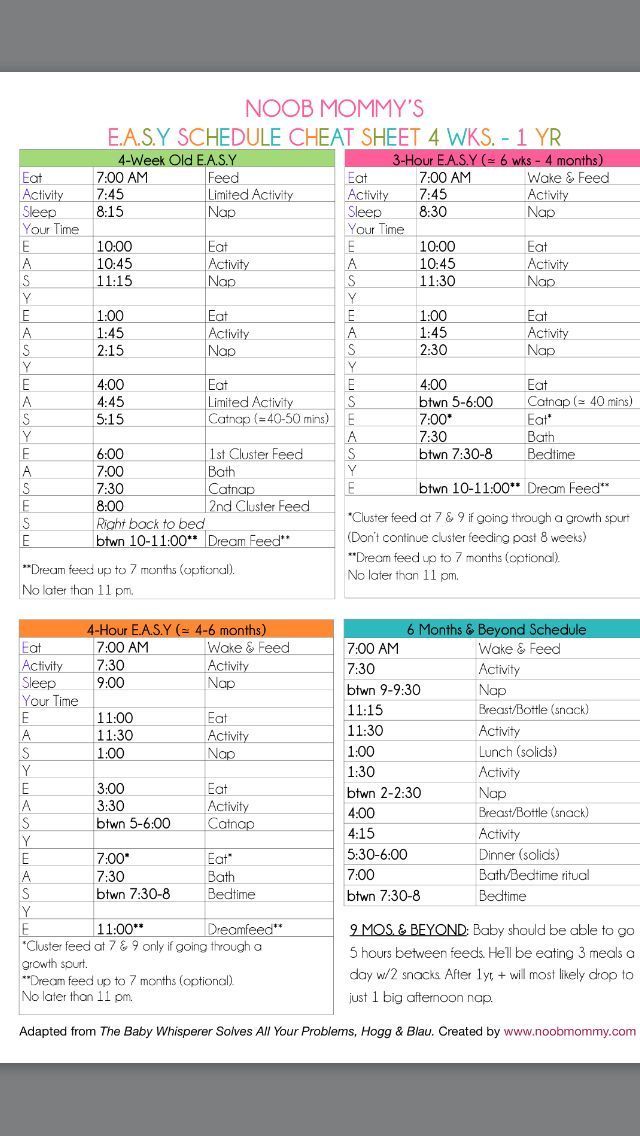 He may be hungry, cold, hot, hard to breathe, he may have itching, pain due to diaper rash, constipation, and many other reasons for whims. The diagnosis of “infant colic” is made when there are no other understandable and explainable reasons for crying, when the child is healthy, is in comfortable conditions, but cries hysterically ... The logical conclusion is that the doctor should make sure that there are no real problems and, accordingly, the diagnosis of “infant colic” should also be put by a doctor!
He may be hungry, cold, hot, hard to breathe, he may have itching, pain due to diaper rash, constipation, and many other reasons for whims. The diagnosis of “infant colic” is made when there are no other understandable and explainable reasons for crying, when the child is healthy, is in comfortable conditions, but cries hysterically ... The logical conclusion is that the doctor should make sure that there are no real problems and, accordingly, the diagnosis of “infant colic” should also be put by a doctor!
There is no sure way to get rid of colic for your baby, but there are certain recommendations that will help you calm your baby and alleviate his condition:
- do not overfeed your baby - overfeeding provokes colic. Remember that at least 2-2.5 hours should pass between feedings;
- maintain optimal temperature and humidity in the room where the child is;
- Offer your baby a pacifier between feeds - many babies calm down when suckling,
- If the baby is breastfed, try changing the mother's diet.







